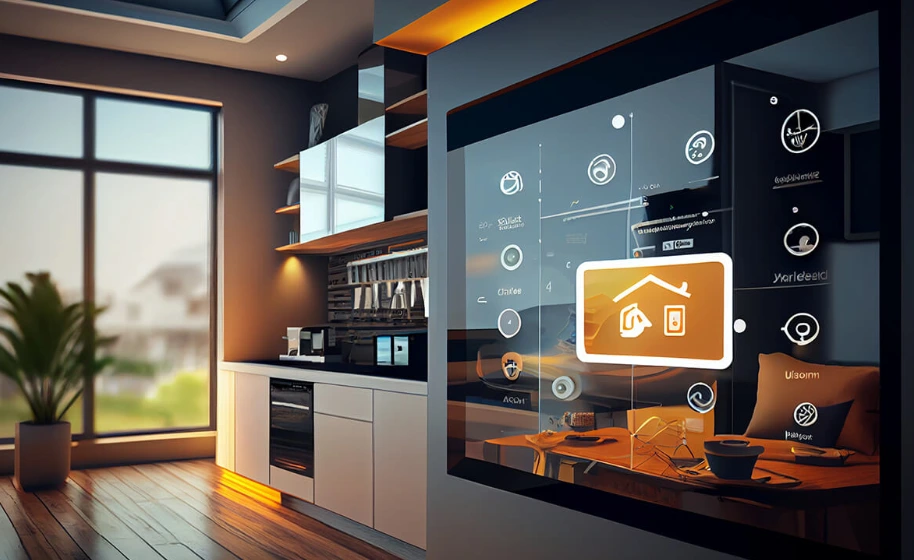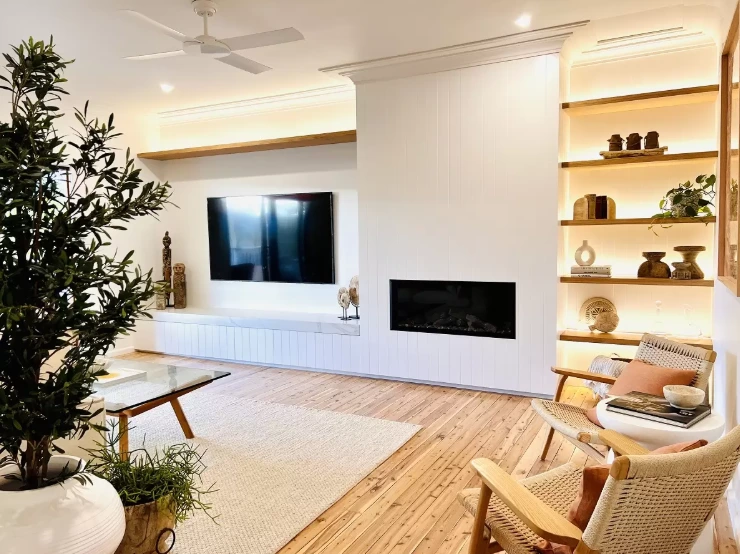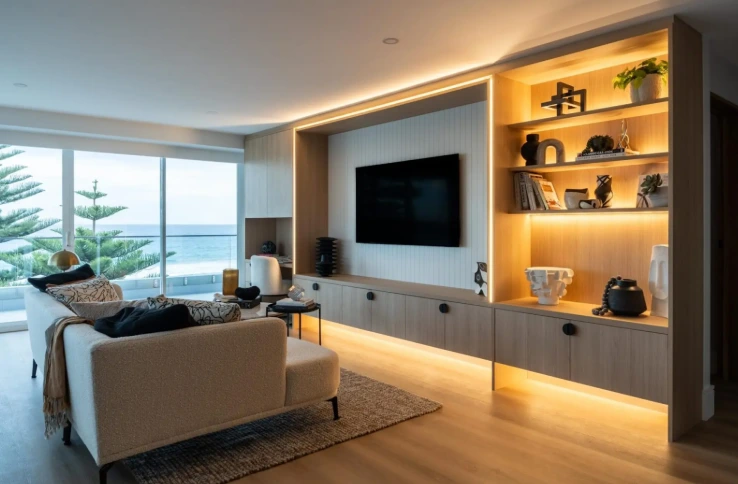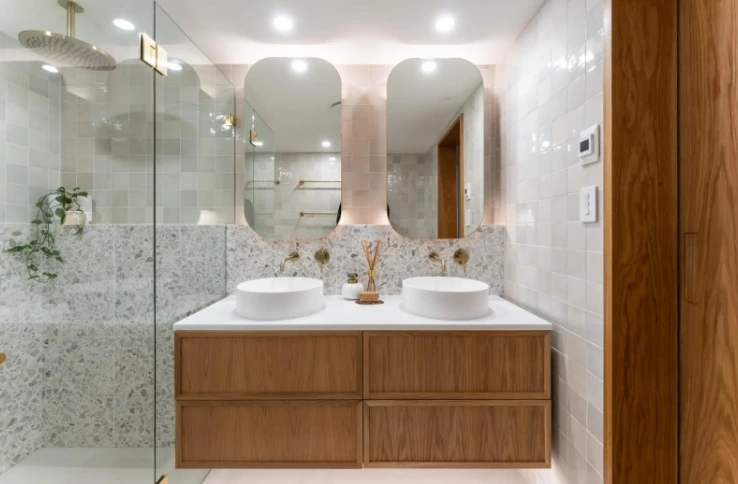The Ultimate Guide to Smart Home Technology: How It’s Changing the Way We Live
Smart home technology has moved from a “nice-to-have” to an essential consideration in modern home design. For our clients on Sydney’s Northern Beaches, it’s not about filling your house with gadgets — it’s about integrating technology seamlessly into your lifestyle so that comfort, security, and efficiency are built in from day one.

Photo from: Illustrarch
What Is Smart Home Technology?
At its simplest, smart home technology means internet-connected devices that you can control remotely — usually through your phone, tablet, or voice assistant. But in practice, it’s about more than convenience. When considered at the design stage of a renovation or new build, smart technology can be hardwired, centralised, and future-proofed, avoiding the “patchwork” feel of plug-in devices.

Key Benefits of Smart Homes
1. Convenience & Lifestyle Flow
Imagine arriving home from work to a house that has already adjusted the lighting, cooled the living area, and queued up your evening playlist. Smart home systems allow scenes like this to be pre-programmed to match your family’s daily rhythm.
2. Energy & Cost Efficiency
A smart thermostat can save up to 20–25% on heating and cooling bills by automatically adjusting temperatures when the house is unoccupied. Smart lighting with motion sensors can shave another 10–15% off your energy spend.
3. Enhanced Security
From video doorbells to perimeter cameras and biometric locks, smart security systems now rival commercial-grade setups. A fully integrated system for a family home typically costs between $5,000–$15,000, depending on coverage and camera quality.

Off-the-Shelf vs Professional Smart Home Systems
- DIY Retrofit Options: Affordable, quick to install, and ideal for smaller homes. Popular examples include Philips Hue for lighting and Ring for security.
- Professional Retrofit Options: Pixie sits in between DIY and full hardwired systems. It offers better performance and design flexibility but must be installed by a licensed professional.
- Full Professional Systems: Best suited for new builds or major renovations where cabling and hubs can be planned from the start. Lighting platforms like C-Bus, Dynalite, and KNX offer scalability and reliability, while Savant provides centralised control, UniFi Protect delivers enterprise-grade networking, and hardwired security ensures robust protection.
Think of off-the-shelf systems as a quick entry point, Pixie as a professional retrofit upgrade, and fully integrated systems as the long-term foundation for a smart home.

Planning Ahead for Smart Home Integration
- Engage Early – The best time to plan is alongside your builder, electrician, or designer.
- Future-Proof Cabling – Install extra provisional cabling throughout the home. This ensures flexibility and avoids costly rework later when adding new systems or features.
- Centralise Systems – Speak to an expert who can specify systems that tie in together. The right design avoids the common pitfall of juggling multiple apps that don’t communicate.
- Budget Wisely – For a four-bedroom family home in Sydney, a realistic budget is usually $30,000–$60,000 for lighting, security, CCTV, and HVAC. It’s when you add audio-visual systems — from multi-room audio to dedicated home theatres that budgets often increase significantly, sometimes pushing the total toward $100,000 or more.

Expert Insights
Cost & Value
For a typical four-bedroom family home in Sydney, what’s a realistic budget range for a whole-home automation system, and which features give homeowners the best return on investment?
Most families spend $30,000–$60,000 on a robust system that covers lighting, security, CCTV, and HVAC. The best return on investment comes from lighting control and security, as they deliver both lifestyle convenience and peace of mind. Audio-visual systems are often seen as the premium add-on that elevates the experience, but they also represent the largest budget increase.
Integration & Future-Proofing
When wiring a home for automation, what’s the one thing you wish designers or builders would plan for earlier in the renovation process?
Without doubt: extra provisional cabling. Too often, homes are built without enough capacity for future technology, which makes upgrades costly later. Running additional cables and leaving conduits in key areas ensures your home can adapt to new technology with minimal disruption.
Trends & Must-Haves
What smart technologies are you seeing most of your clients ask for right now, and what upcoming trends should homeowners be aware of if they want to future-proof their renovation?
The most common requests are for smart lighting, whole-home Wi-Fi networking, and CCTV security systems. Many clients also want intercoms and access control that link directly to their phones.
One standout trend in the high-end residential market is the rise of Sonance Invisible Series speakers. Architects and designers love them because they deliver outstanding sound while remaining completely hidden within walls or ceilings. These speakers have taken the premium home market by storm, offering a seamless blend of performance and aesthetics that’s hard to beat.
In terms of future-proofing, the best approach is to allow for flexibility. Even if you don’t add every feature now, provisional cabling ensures your home is ready to expand as your lifestyle evolves.

The Future of Smart Homes
Smart homes are moving beyond isolated devices into whole-home ecosystems. With everything from lighting and HVAC to audio-visual and security working together, the focus is on creating seamless, intuitive experiences. Homes that plan for this integration today are better positioned to adapt as new technologies emerge.
Final Thoughts
Smart home technology is no longer just about gadgets; it’s about creating a home that works with you. Whether through simple DIY devices, professional retrofit systems, or fully integrated automation, the benefits are clear: greater comfort, security, efficiency, and long-term flexibility.
The best results come when technology is considered early in the design process, ensuring every detail is integrated seamlessly into the home’s architecture and interiors. For homeowners planning a renovation or new build, smart home systems are no longer an optional extra — they’re becoming part of the foundation for modern living.
And for those seeking the very best, consider solutions such as ICT Protege for security, Savant or Sonos for audio, and Sonance Invisible Series speakers for a finish that’s as beautiful as it is intelligent.
Smart Home FAQ
How much does a smart home cost in Sydney?
Budgets typically range from $30,000–$60,000 for lighting, security, CCTV, and HVAC. Adding audio-visual systems such as multi-room audio or theatres can push the budget toward $100,000 or more.
Can I add smart technology to an existing home?
Yes. DIY devices like Philips Hue or Ring are perfect for small retrofits. For a more professional retrofit, Pixie offers greater reliability and performance but must be installed by a qualified professional.
Which is better: DIY smart devices or professional systems?
DIY products are cost-effective for quick upgrades, but professional systems provide scalability, long-term reliability, and integration across the whole home.What systems are recommended for new builds?
For lighting, platforms like C-Bus, Dynalite, and KNX are proven options that deliver scalability, reliability, and design flexibility. For centralised control, Savant is a premium solution. For security, hardwired systems or ICT Protege provide robust protection, while UniFi Protect delivers enterprise-grade networking. For audio, Sonos remains a favourite, and Sonance Invisible Series speakers continue to lead the high-end market.


